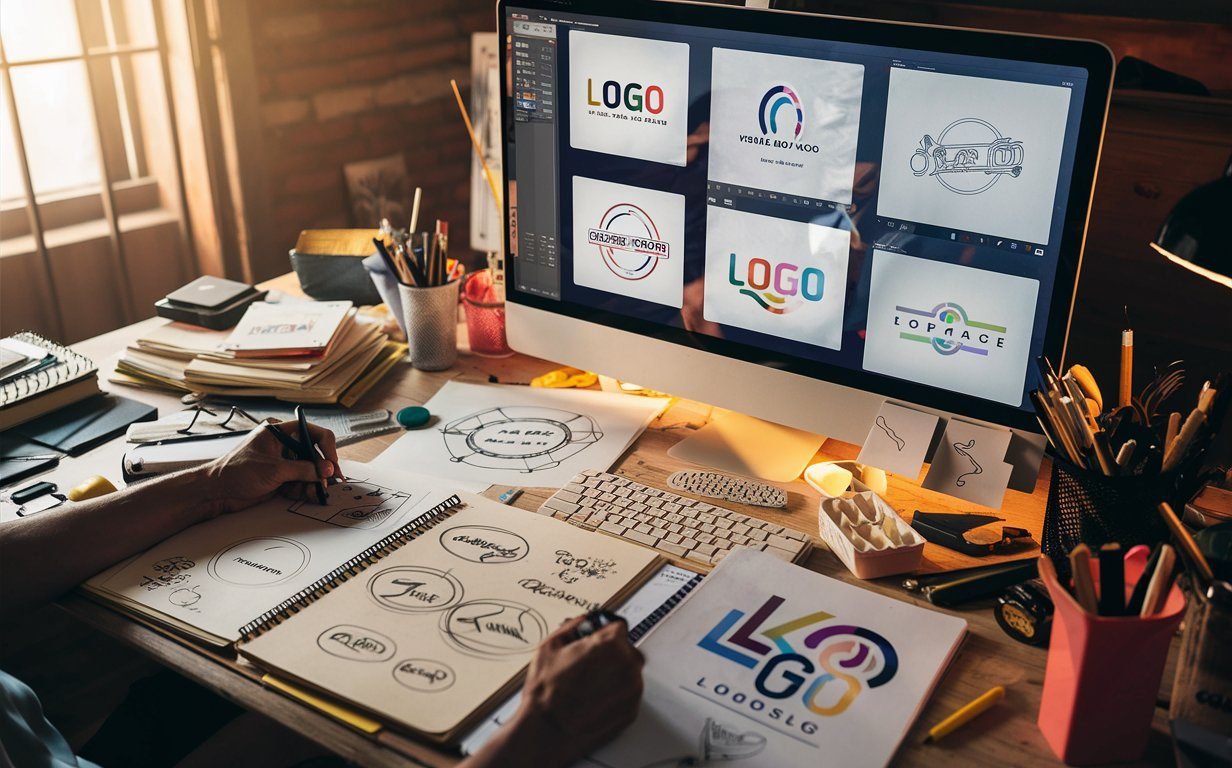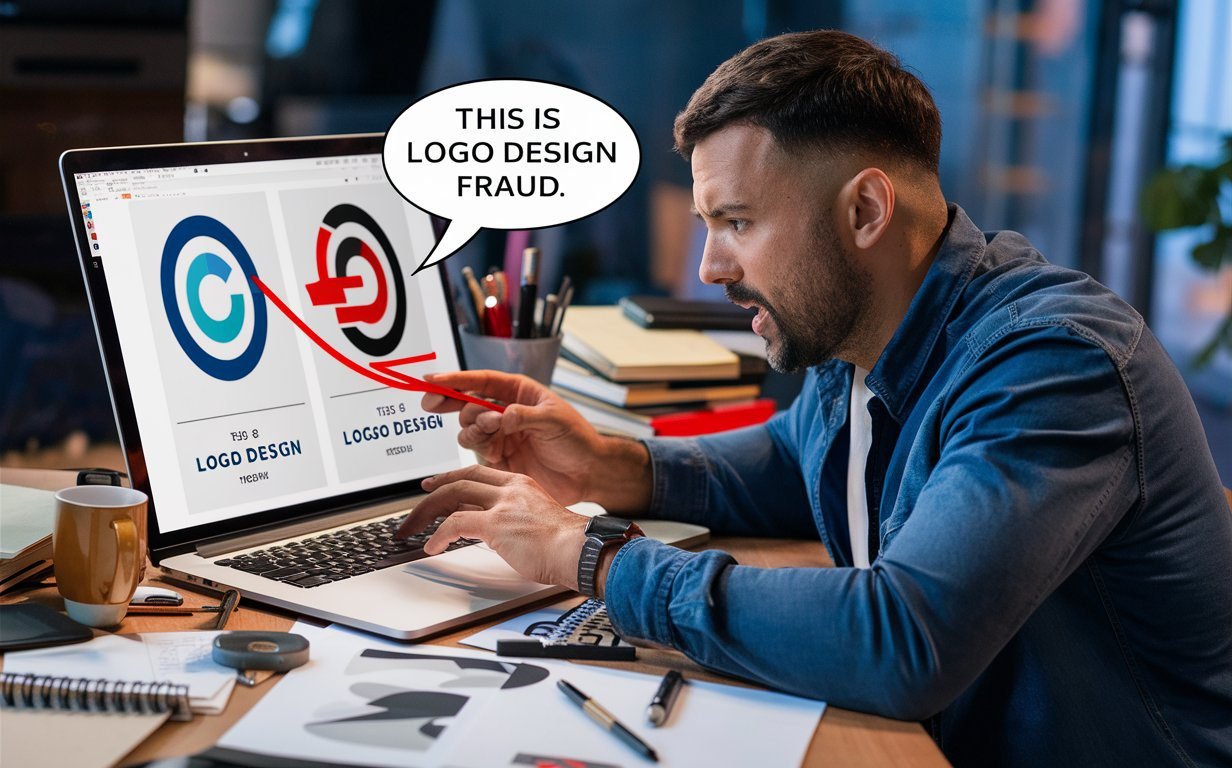The Dark Side of Branding
How Logo Fraud Threatens Your Business Identity
The Real Cost of Logo Copycats

Written by DigiTech360
July 17, 2024
Branding is the heart and soul of a company’s identity. A well-crafted logo and design can create a lasting impression, foster customer loyalty, and differentiate a brand in a crowded market. However, there is a dark side to branding where unethical designers and companies engage in fraudulent activities, such as copying logos and designs. This article uncovers the shocking realities of logo and design fraud, highlighting how such deceitful practices can undermine trust and harm businesses.
The Importance of Authentic Branding
Creating a Unique Identity
A unique and authentic brand identity is crucial for standing out in the market. Logos and designs are visual representations of a brand’s values, mission, and vision. They help in creating a memorable and distinct identity that resonates with the target audience.
Building Trust and Loyalty
Trust and loyalty are built over time through consistent and genuine branding efforts. When consumers recognize and trust a brand’s logo and design, they are more likely to remain loyal customers. Authenticity plays a key role in this process.
The Emergence of Logo and Design Fraud
What is Logo and Design Fraud?
Logo and design fraud involves the unauthorized copying or imitation of another brand’s visual identity. This can include duplicating logos, design elements, color schemes, and even typography. Such fraudulent practices are often carried out by unscrupulous designers or companies looking to capitalize on the success of established brands.
Common Tactics Used in Design Fraud
Fraudulent designers employ various tactics to deceive their clients and the public
- Copying Well-Known Logos: Directly replicating logos of successful brands to create confusion and gain undue advantage.
- Slight Alterations: Making minor changes to existing logos or designs to make them appear original while retaining the core elements of the copied design.
- Use of Stock Images: Using generic stock images or clipart instead of creating custom, original designs.
Shocking Cases of Logo and Design Fraud

Case Study: Pepsi vs. Pan American
In a notorious case, Pan American Beverages, a regional soft drink company, was found to have copied Pepsi’s iconic logo. The similarities were so striking that consumers and industry experts immediately noticed the deception. This blatant imitation led to legal actions and significant damage to Pan American’s reputation.
Case Study: Airbnb vs. Couchsurfing
Airbnb, a popular online marketplace for lodging, faced a situation where Couchsurfing, a competitor, allegedly copied its design elements. The visual similarities between the two platforms created confusion among users and sparked debates about originality and ethics in design.
The Consequences of Logo and Design Fraud

Legal Repercussions
Companies involved in logo and design fraud can face severe legal consequences, including lawsuits, hefty fines, and injunctions. Intellectual property laws protect original designs, and violating these laws can lead to significant financial and reputational damage.
Loss of Trust and Credibility
When a brand is caught using a copied logo or design, it loses trust and credibility among consumers. Trust, once broken, is hard to rebuild, and the negative publicity can have long-lasting effects on the brand’s reputation.
Financial Impact
The financial impact of design fraud can be substantial. Legal battles, rebranding efforts, and loss of customers can result in significant financial losses. Companies may also have to invest in extensive marketing campaigns to restore their image.
Preventing Logo and Design Fraud

Conduct Thorough Research
Before finalizing a logo or design, conduct thorough research to ensure it is unique and not similar to any existing designs. This can help in avoiding unintentional plagiarism and the subsequent legal and reputational risks.
Work with Reputable Designers
Collaborate with reputable and experienced designers who have a proven track record of creating original and authentic designs. Verify their portfolio and check for any history of plagiarism or unethical practices.
Use Design Protection Tools
Utilize design protection tools and services that help in monitoring and protecting your brand’s visual identity. Trademark your logos and designs to establish legal ownership and deter potential fraudsters.
The Role of Technology in Detecting Design Fraud

Advanced Image Recognition Tools
Technology has advanced to the point where image recognition tools can detect similarities between designs. These tools can scan the internet for copies of your logo or design and alert you to potential infringements.
Blockchain for Design Authenticity
Blockchain technology offers a way to ensure the authenticity of designs by providing a tamper-proof record of creation and ownership. This can be particularly useful in protecting digital assets and proving originality in legal disputes.
The Ethical Responsibility of Designers

Adhering to Ethical Standards
Designers have an ethical responsibility to create original work and respect intellectual property rights. Adhering to ethical standards ensures the integrity of the design profession and fosters trust with clients and the public.
Educating Clients
Educate clients about the importance of original designs and the risks associated with copying or using plagiarized content. Clients should understand the value of investing in authentic branding to build a sustainable and reputable business.
Logo and design fraud undermines the very essence of branding and can have devastating consequences for businesses. By understanding the tactics used by fraudsters, recognizing the importance of originality, and taking proactive measures to protect intellectual property, companies can safeguard their brand identity and maintain the trust of their consumers. Ethical practices in design not only foster creativity but also ensure a fair and competitive market.
FAQs
What is logo and design fraud?
Logo and design fraud involves copying or imitating another brand’s visual identity, such as logos and design elements, without authorization.
How can companies prevent logo and design fraud?
Companies can prevent design fraud by conducting thorough research, working with reputable designers, and using design protection tools to monitor and protect their visual identity.
What are the consequences of logo and design fraud?
The consequences include legal repercussions, loss of trust and credibility, and significant financial impact due to legal battles, rebranding efforts, and loss of customers.
How can technology help in detecting design fraud?
Advanced image recognition tools and blockchain technology can help detect similarities between designs, monitor for potential infringements, and ensure the authenticity of designs.
Why is it important for designers to adhere to ethical standards?
Adhering to ethical standards ensures the integrity of the design profession, fosters trust with clients and the public, and promotes a fair and competitive market.
Related Articles
The Dark Side of Digital Marketing
PPC Fraud ExposedStrategies to Protect Your Marketing Budget Digital marketing is a beacon of opportunity for startups, offering ways to reach large audiences and grow rapidly. However, this world of opportunity comes with its own shadows. One of the most troubling...
Behind the Scenes of SEO Fraud
SEO Fraud ExposedProtect Your Website from Black Hat Tactics Search Engine Optimization (SEO) is the backbone of a strong online presence. It ensures that your website ranks high on search engine results pages (SERPs), making it more visible to potential visitors....
Exposing the Dark Side of Web Development
Behind the CurtainCommon Scams in Web Design and Development In today's digital age, having a robust online presence is crucial for businesses of all sizes. Web design and development play a significant role in shaping this presence, but the industry is not without...



